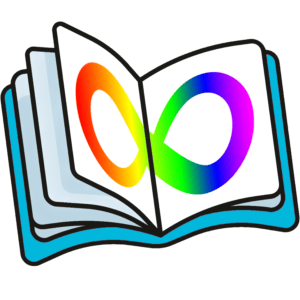The CTSA has been supporting autistic children and young people between the ages of 0 and 18 since 2018. CTSA is the abbreviation for “Centre pour enfants et jeunes présentant un trouble du spectre de l’autisme” (Centre for children and young people with an autism spectrum disorder).
The CTSA was founded together with seven other centres for children with special educational needs. The CTSA used to be called the Institute for Autistic Children and Adolescents (Institut pour enfants autistiques et psychotiques, abbreviated to IEAP). This former institute was founded in 1982, and it also accepted pupils into its special education classes.
Target audience
The CTSA’s interventions are aimed at children and adolescents who have received a medical diagnosis according to the DSM-5 criteria.
Their parents and the professionals who work with them can also utilise the services of the CTSA.
Offers
- Support diagnostics
- Analysis of the most suitable form of schooling and/or support
- Psychological support for autistic pupils, their parents and siblings
- Counselling and support for school staff
- Further training for teachers and members of ESEB teams
- Parental counselling and support
- Specialised outpatient interventions at mainstream schools (intervention spécialisée ambulatoire, ISA for short)
- Schooling in separate special school classes
- Speech therapy, occupational therapy, music therapy and psychomotor therapy
- and much more
The CTSA staff, their respective responsibilities and profile photos can be found on their team page.
Their educational approach
They provide comprehensive, individualized care tailored to the needs of each child. The individualized educational project for each child or adolescent is based on their personal strengths and interests while taking into account their specific abilities and challenges.
The interests and sensory preferences of each student serve as a starting point for developing new skills, abilities, and knowledge. You create learning situations that closely resemble the students’ daily lives, gradually fostering their social inclusion and independence.
The Teaching Unit
The CTSA consists of four units, each with its own focus. The Teaching Unit (UE) is dedicated to education. The UE provides:
- Special education for children and young people in their cohabitation classes. These are housed in primary and secondary schools.
- Special educational support in separate rooms for young people. Goal: Preparation for an adult and professional life that is as independent as possible;
- Autism-specific support (ISA) for pupils who attend a mainstream school.
The UE currently consists of a total of
- 68 specialists in their special school classes;
- 18 specialists in its outpatient team, the ISA (educators, graduated educators, pedagogues and remedial teachers).
The special education classes are spread across 18 locations throughout Luxembourg. Most of them are housed in mainstream schools.’
(Note from the Hasilux team: We are working on a simplified description of these technical terms.)
Methods and Support Used
- Physical support: holding hands, guiding a gesture, leading by the shoulders;
- Visual support: showing concrete objects, pictures, photos, pictograms, labels, procedures, or reminders;
- Gestural support: pointing in a direction, adopting specific postures or facial expressions;
- Verbal support: asking questions, giving additional instructions, pronouncing words or parts of words, providing hints.
- Alternative and improved (communication) tools, including TEACCH®, PECS®, AAC, DIR-Floortime® and SI (sensory integration therapy).
(Note from the Hasilux team: We are working on explanations for these tools.)
Collaboration with Parents
The CTSA works closely with families, particularly to reduce challenging communication forms and behaviors that some autistic students may exhibit at school or elsewhere.
Following a functional behavior analysis, they propose more appropriate communication methods to the student and use social and/or tangible reinforcements to encourage them to opt for these more socially acceptable forms of communication.
Glimps
RTL.lu report of 4 minutes and article: a mother and her son share their story. Information about the CTSA, with a glimpse into a classroom at the CTSA. Publication date: 09/17/2024. Journalist: Monica Camposeo.
Questions About Procedures
ℹ️ Our team of authors is working on this section. Thank you for your patience.
- Who can request support?
- How is admission to the CTSA determined?
- What are the waiting times before the CTSA can intervene in schools?
- How is it decided whether a child joins CTSA classes or whether the CTSA intervenes in schools?
- How many hours of support can the CTSA provide in secondary education?
- What connection exists with a completed diploma and access to the regular job market?
- What happens when the support ends?
- How does the collaboration with other organizations work (IFEN, Fondation Autisme Luxembourg, Autisme Luxembourg asbl, Talkii, LuxAI, men.lu, education.lu, CNI, CI and CIS, external specialists)?

